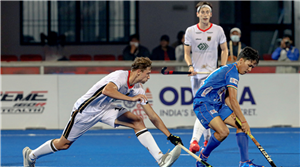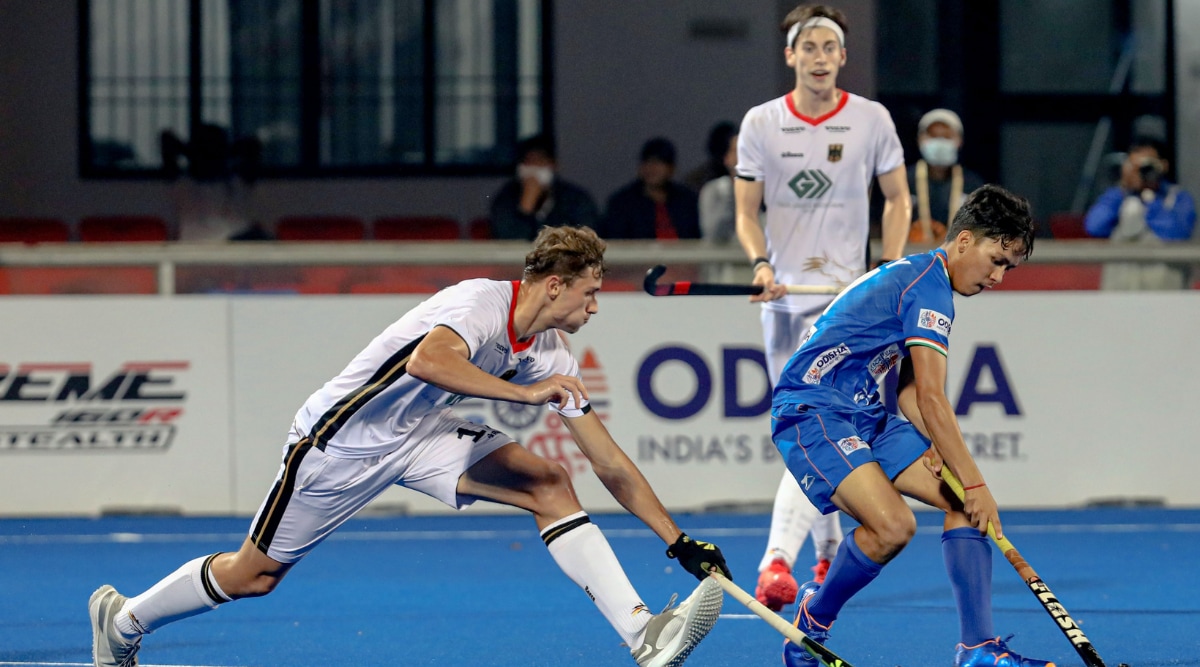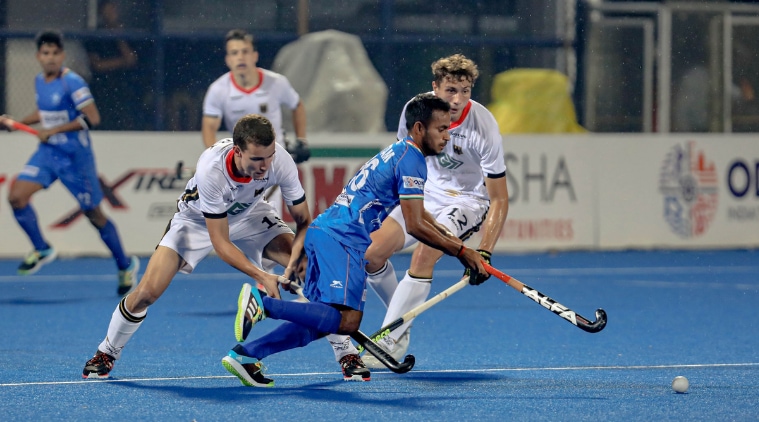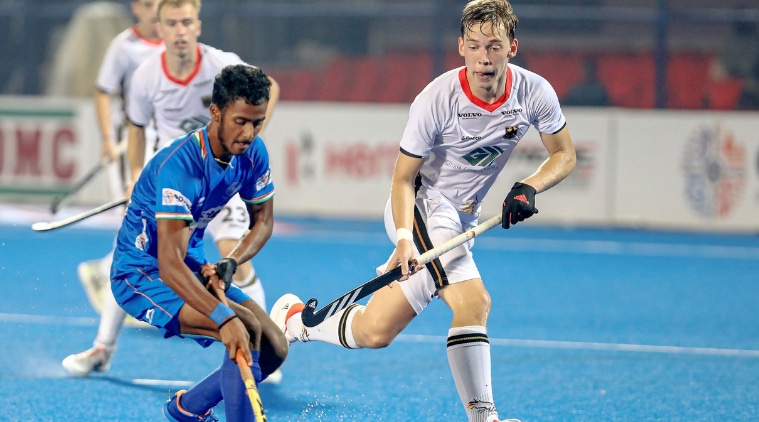With their tight man-to-man play, Germany were always going to be an uncomfortable opponent for India. Few, however, thought it would get so brutal.
If not for the dozen or so Junior World Cup brandings around the stadium periphery, it would have been easy to mistake this for a men-versus-boys contest. At least that’s what it felt like when the two teams lined up for the anthems, almost giving an impression that they were ordered to stand in descending order of their heights, starting with Germany.
The glaring difference in the physiques, with some German players one head taller than their Indian counterparts, got magnified once the game began. When Vishnukant Singh tried to steam ahead with the ball through the midfield, Mario Schachner simply lunged forward and used his long reach to snatch the ball away without any fuss, almost like stealing candy from a kid.
Minutes later, when forward Uttam Singh tried to play a lobbed pass to beat the two men bearing down on him, one of them, Erik Kleinlein, just lifted his stick and intercepted the ball mid-air with such ease that one felt sorry for Uttam.
Rahul Kumar Rajbhar got some space on the right and went one-on-one with Germany’s goalkeeper Anton Brinckman. He beat Brinckman with a dribble and went beyond him. But the goalkeeper, who was on his knees, used his giant wingspan to tackle the Indian forward and win back possession.
This remained the pattern for the entire first half, a period that decided the Junior World Cup hockey semifinal between India and Germany. Taking full advantage of their height, the six-time champions ended the hosts’ title defence with a facile 4-2 win. The margin could have been a lot bigger had Germany converted the three clear-cut chances that fell their way in the opening 30 minutes.
Succumbing to bullying
With their tight man-to-man play, Germany were always going to be an uncomfortable opponent for India. Few, however, thought it would get so brutal. There were shades of the German side that lost to India in the bronze-medal match at the Tokyo Olympics in their junior team that decimated India with their belligerence.
Both German teams – in Tokyo and here in Bhubaneswar – used their physique to bully the Indians, especially in the midfield. At the Olympics, the Indian seniors were able to give it back to them and stage a comeback after going 3-1 down. The juniors, however, succumbed to their constant, relentless and in-your-face aggression.
“It is what it is, they were pushing us… but that’s what you get at this level,” India coach Graham Reid said after the match. “That’s why strength and conditioning is so important. We have tactics (to counter that), we have to continue to improve.”
India’s players have often had a height disadvantage while playing European opponents. Almost always, they negated that with their superior stick skills and speed. On Friday, they were unable to use the full range of their skills.
One of the simplest ways to nullify the physical factor is by receiving the ball and immediately stepping away from the defenders’ zone. “You just get out of their reach,” Reid said. “We weren’t able to do that.”
India is a team that likes to counterattack, instead of taking the initiative in a match. Against Germany, who played a half-court press, waiting in their half for India to make a move, the Indians were forced out of their comfort zone.
Choking the midfield
The Germans inundated the midfield and forced India to pass towards the sidelines. Indians looked so occupied in keeping an arms-length distance from the Germans that they weren’t able to make right decisions – whether to shoot, find a foot or dribble.
The extra second they spent on the ball gave Germany enough time to use their long reach and snatch possession. Germany defended in groups of two, thus putting additional pressure on Indian players and hardly got a tackle wrong.
This was critical, as it helped them keep India away from their ‘D’ – India had half as many circle penetrations compared to Germany – and avoid conceding penalty corners, which has been the hosts’ strength.
And the second they won the ball, Germany launched aerial passes to the other half of the pitch, where forwards would use their strength to outmuscle the Indian defence.
One of India’s hallmarks after the opening defeat to France was the calmness with which the defence has dealt with high-pressure situations. While Canada and Poland did not test the backline that much, the defence – led by Sanjay Kumar, Yashdeep Siwach and Sharda Nand Tiwari – put in a remarkable shift against Belgium to eke out a quarterfinal win.
The way India defended against Germany was in stark contrast to the Belgium game – the passes lacked zip and were easily intercepted, they made uncharacteristic trapping errors and the weak left flank was opened up time and again.
These were the same problem areas for India against France, whom they will face in the third-place match on Sunday. Against them, in the opening match, India’s biggest bane was the lack of match practice.
Against Germany, they simply fell short. Quite literally.
Source: Read Full Article




